FORGED by gold, copper and diamond exploration, the small town of Bingara in North West NSW is known for its Greek heritage, its grand theatre and the tragic Myall Creek Massacre. But it is the town’s future that is shaping up to be the most fascinating chapter.
In 2006, residents identified agriculture, tourism and education as the key opportunities to restore a vibrant and prosperous community. Since then, the achievements of this New England town on the banks of the Gwydir River have been extraordinary.
It has restored its famous Roxy Theatre and Café, and has welcomed a new hospital, a state-of-the-art hospitality training centre, a new water supply system and an award-winning townscape design.
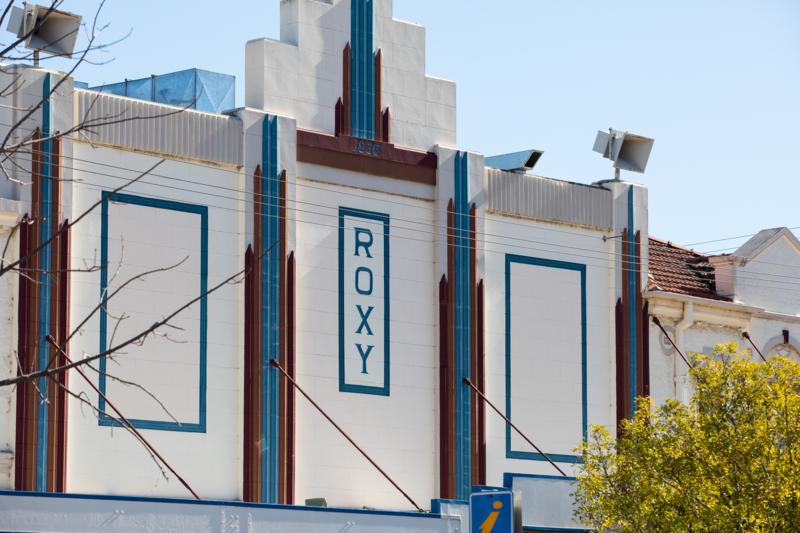 Bingara’s Art Deco Roxy Theatre complex has been restored as part of the town’s revitalisation project.
Bingara’s Art Deco Roxy Theatre complex has been restored as part of the town’s revitalisation project.
The focus now is on two long-term innovative projects: The Living Classroom and, adjacent to it, The Carbon Farm. The Living Classroom is a 150-hectare reclaimed town common that, since 2011, has been transformed into a diverse regenerative farm for education, research, tourist activities and functions, complete with classrooms and a bunkhouse.
It is the keystone project in the Bingara Town Strategy, which aims to inspire new farmers and reinvigorate the town and surrounding districts.
Garry McDouall, a former beef producer who is a key committee member and driving force behind the community’s plans, says what started as a garden is quickly becoming a learning centre for improving local food production and soil health.
“We have input from 24 cooperative farmers, both local and from other regions, to develop it as a farm and a platform for trading ideas and research.”
“These farmers represent around 86,000ha in farmland and bring ideas about improving soil health and food production to trial at The Living Classroom. If an idea shows promise, we can expand to a broadacre scale on these farms.”
NSW Farmers’ Bingara branch chair, beef producer Don Mack, plans to join the team of cooperative farmers – as soon as the drought breaks.
Bingara’s Living Classroom offers education, research and tourist activities, complete with classrooms and a bunkhouse.
Garry says this cooperation, along with input from experts in soil health, landscape design and water management, has resulted in a diverse farm featuring horticulture, pastures, aquaculture and forestry. The centre harnesses the best knowledge from traditional and other contemporary farming methods and scientific research.
“The Living Classroom is a wonderful platform for learning how to incorporate improved soil health into farm management and build a sustainable food future in the region. We are so lucky to have this in our region.”
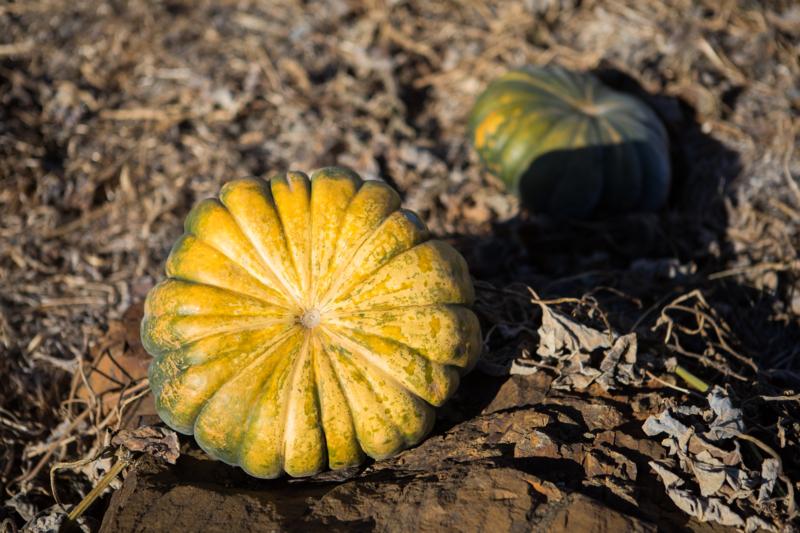
Former schoolteacher and local businessman Rick Hutton was one of the originators of The Living Classroom and is secretary of the adjoining Carbon Farm, 100ha of formerly degraded grazing land. Like Garry and Don, he likes the concept of regenerative agriculture, which has a focus on rebuilding soil organic matter, soil biodiversity and soil carbon.
*RELATED ARTICLES on environmental issues:
- Navigating the new native vegetation codes
- Destocking: farmers making the hard choices
- Growing profits behind the wire
“Farmers know the importance of good soil health and there is lots of valuable work and research going on, but it is fragmented and this can make it difficult for farmers to adopt the best approach to regenerating soil health,” Rick says.
“Carbon is the most important element in soil, but I believe it is the least understood. We do know that if you’re increasing carbon levels in the soil, then it’s a good indication everything else is working.”
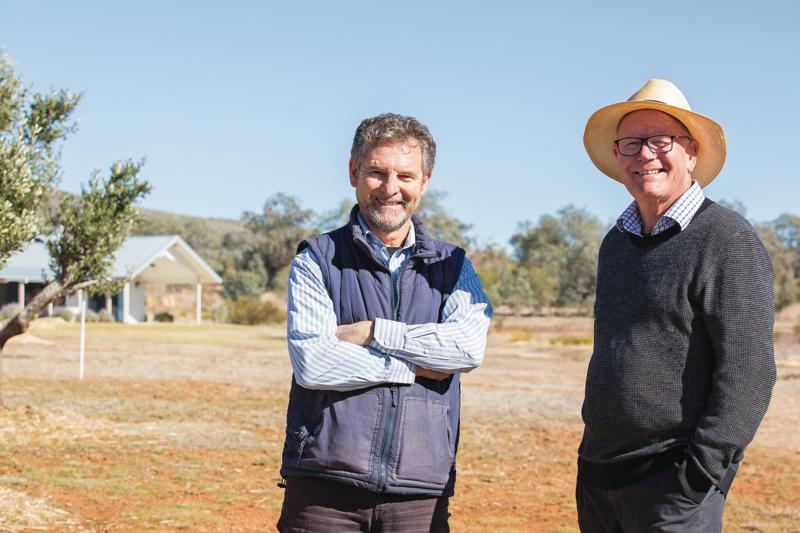 Bingara and District Vision 2020 stalwarts Rick Hutton and Garry McDouall.
Bingara and District Vision 2020 stalwarts Rick Hutton and Garry McDouall.
EMBRACING DIFFERENT SOIL TYPES
Rick says soil testing has been vital for decision-making at The Living Classroom, with electromagnetic surveys and deep soil probes providing comprehensive data on soil structure, chemistry and biology.
“We took soil samples down to 1.2m, in 15m quadrants across the entire farm, and were quite astounded by the differences in soil type. We actually discovered there were six different soil types.”
The extensive soil studies helped determine six initial food production areas: a grassland zone for grazing, a Chinese medicinal garden, a citrus and olive plantation, a bush tucker project, a fruit and nut orchard, and a vineyard. As well, areas are set aside for forestry and woodland.
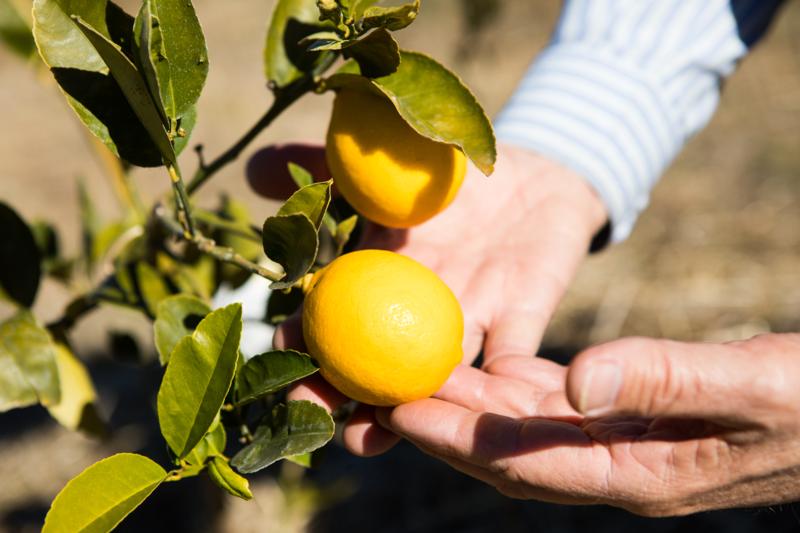
Another key task of The Living Classroom has been to capture water. “Almost 3km of banks were formed as well as 14 ponds and dams to keep water on the farm and as part of a flood mitigation program for the town,” says Rick. “These projects have already proven their worth in significantly reducing the impact of flooding during heavy rain events.”
In 2015 the ‘Great Lake’, a six-megalitre feature dam within The Living Classroom, underwent a makeover by two landscape architecture students from the Queensland University of Technology in Brisbane.
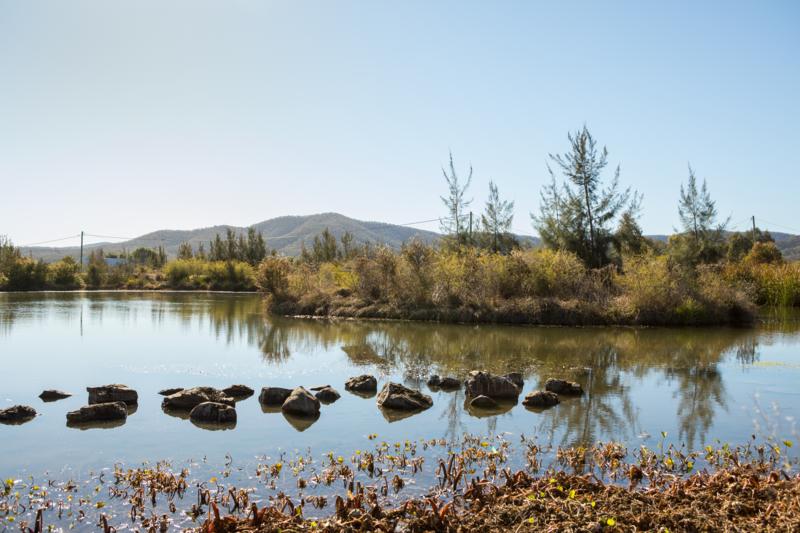 Water catchment is a key element of The Living Classroom.
Water catchment is a key element of The Living Classroom.
Their research had shown that traditional farm dams fail to deliver a reliable source of clean water for stock, due to high evaporation, stock pollution and instability of water supply.
Through their Aussie Farm Dam Makeover project, the students concluded farm dams need to be deeper, with less surface area to volume, and ecologically enhanced with vegetation in the dam and along its edges.
The project won the support of the Gwydir Shire Council and the North West Local Land Services and the dam is now an adventure playground for the many groups of visiting school students, featuring a fish capture cove, swamp walkway and flow form water feature.
IMPROVING SOIL CARBON LEVELS
With The Living Classroom up and running, attention is turning to The Carbon Farm. Backed by government grants and corporate donations, it will be regenerated to showcase options for the capture and long-term storage of carbon dioxide, or carbon sequestration.
It will also provide a site for farmers, researchers, students and visitors to see and consider the many and varied options for soil management and carbon capture, Rick explains.
“It’s great for the town,” says Don Mack. “We all need to learn more about carbon sequestration and improving soil carbon levels.”
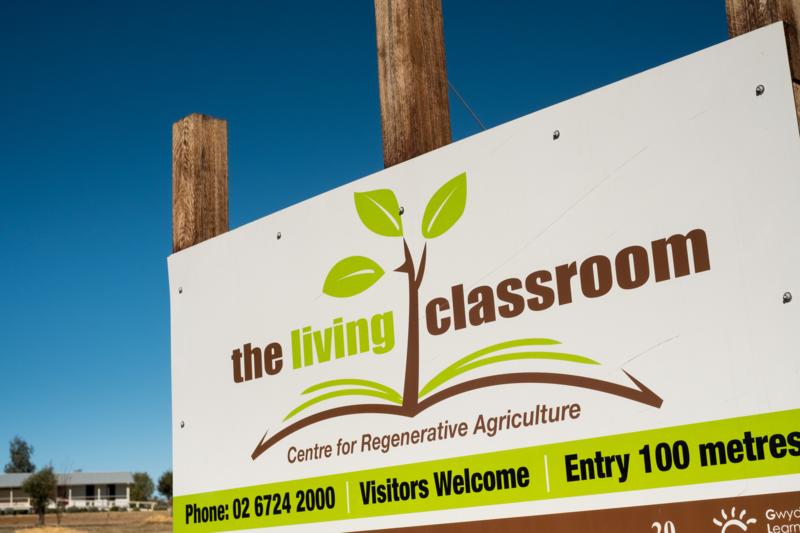
The Living Classroom and The Carbon Farm demonstrate how closely Bingara’s fortunes are linked with the strength of its farming sector, something Rick is keenly aware of. He was one of the instigators of Bingara and District Vision 2020, a community group formed in 2005 that combines the roles of a progress association, chamber of commerce, think tank and lobby group.
“Many small country towns like ours are struggling, but I think we have been reasonably successful in achieving the goals of our Vision 2020 and keeping a vibrant Bingara community.”
According to the latest census, the Gwydir Shire had the biggest increase in population in this region of NSW with 6% growth. Tourism remains strong and is more consistent and the facilities at The Living Classroom are capturing the conferencing market.”
*RELATED ARTICLES about community efforts:
- Coleambally farm run by volunteers
- Country women pulling together
Rick was enlisted by the council to review and develop learning projects and investment facilities in the shire. In 2000, this resulted in the establishment of the Gwydir Learning Region – a collection of community, education and council representatives who work to ensure local people of all ages have the best access to education in the area.
It also saw the development of state-of-the-art trade training facilities in Bingara and nearby Warialda. Since 2013, Bingara’s unemployment rate has dropped by almost 1%.
GREEK HERITAGE IN REGIONAL NSW
As well as looking to its future, Bingara has been busy focusing on its heritage – including its Greek connections. Throughout regional NSW, it was the Greek cafes that introduced milkshakes and mixed grills to country towns. The cafes were open all hours, seven days a week and were just as important as the local pub. The past decade has seen their increasing closure. Bingara, however, has brought its cafe back to life.
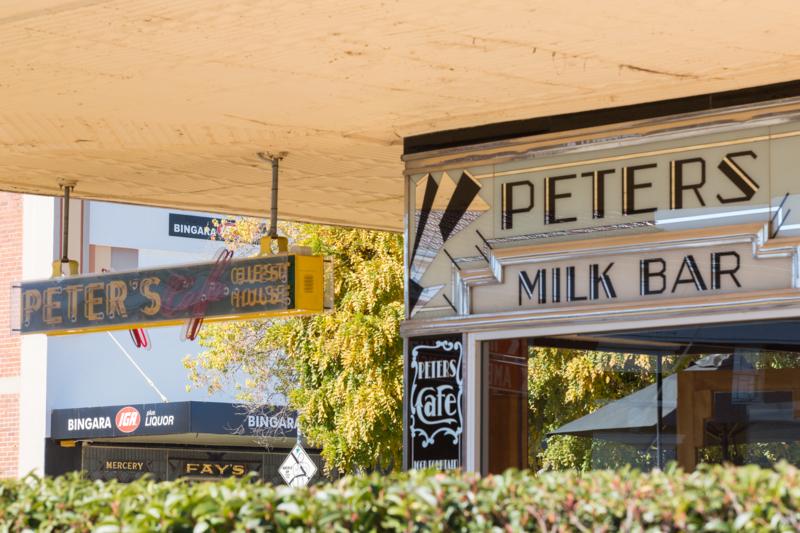 Peters Cafe and Milk Bar has been restored to its former glory.
Peters Cafe and Milk Bar has been restored to its former glory.
The cafe forms part of the Roxy complex. Built by three Greek partners in 1936, it included the Roxy Theatre, which closed in 1958, and Peters Cafe and Milk Bar. Unlike the theatre, the cafe continued to operate under a series of Greek owners until 1965 when it was sold and became a memorabilia shop and later a Chinese restaurant.
ROXY THEATRE RESTORATION
In 1999, responding to interest from the community, the council bought the complex and set to work restoring the magnificent Art Deco theatre to its original splendour. It reopened in May 2004 as a cinema, performing arts venue and multi-purpose function centre, complete with ornate stucco plaster and coloured lights from 1936.
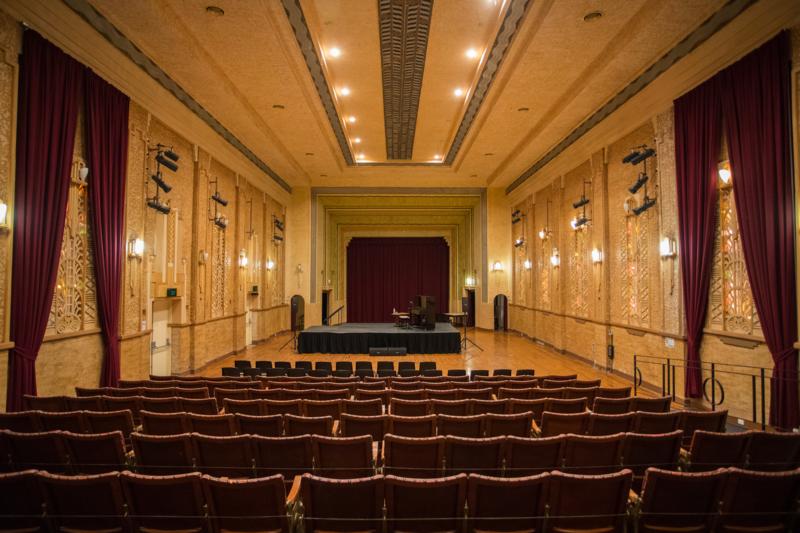 The Roxy’s auditorium has had a magnificent makeover.
The Roxy’s auditorium has had a magnificent makeover.
Five years later, the council received a $750,000 government grant, primarily to revive the Greek cafe. In March this year, the fully restored Roxy Café was leased to new managers who run it as a cafe and wine bar. A trade training kitchen has also been added to the complex.
In 2014 a Greek museum was opened within the Roxy complex, illustrating the story of Greek immigration and settlement in country NSW and Queensland. And last year the Art Deco complex was given state-significant heritage status, which will help preserve the building and provide further opportunities for funding.
Vision 2020 stalwart Garry McDouall says Bingara has been re-energised. “Bingara has always been a great place to live,” he says. “Now there is an added air of vibrancy to the community and the main street is busy again. It’s returning to being a buzzy sort of place again.”
TALE OF TWO CINEMAS
Back in the 1930s, Bingara had just 1,500 residents, but for a time it had two cinemas, which led to the so-called “cinema wars”. The modest Regent Theatre opened in 1935, followed by the far grander Roxy a year later.
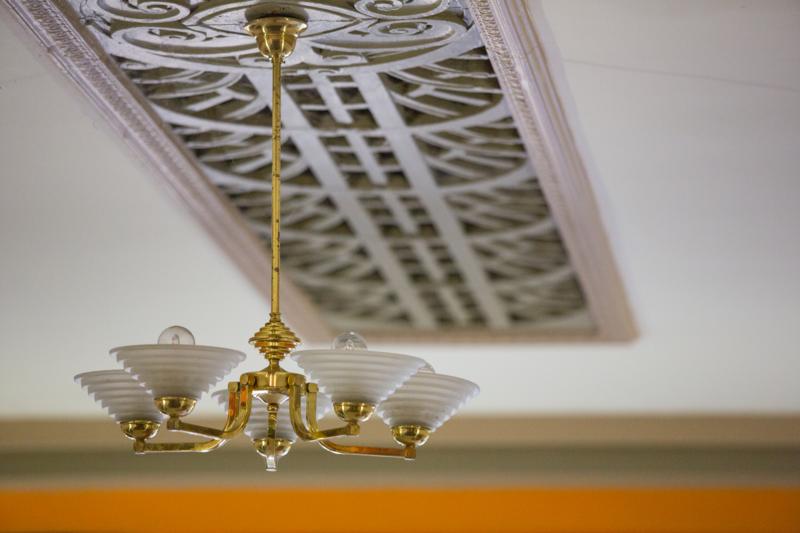 The Roxy’s opening drew a crowd, with The Bingara Advocate reporting “probably no event in the history of Bingara has caused more interest and excitement”.
The Roxy’s opening drew a crowd, with The Bingara Advocate reporting “probably no event in the history of Bingara has caused more interest and excitement”.
It also sparked a fierce battle with the Regent Theatre, which resulted in slashed prices, improved sound equipment for both venues and even a movie ball to which Roxy co-owner George Psaltis arrived dressed as Shirley Temple.
Despite marketing ploys, including an offer of “a one pound reward for any lady who will sit alone in the theatre for a midnight screening of The Black Room with Boris Karloff”, the Roxy’s owners lost everything in just five months, declaring bankruptcy in September 1936.
The Roxy continued as a cinema for a time but closed its doors in 1958 and was left dormant for another four decades. The Regent Theatre went on to prosper through the 1950s and 1960s until attendances dwindled and it closed in the 1970s. Since 1981 it has housed the Bingara Civic Centre.
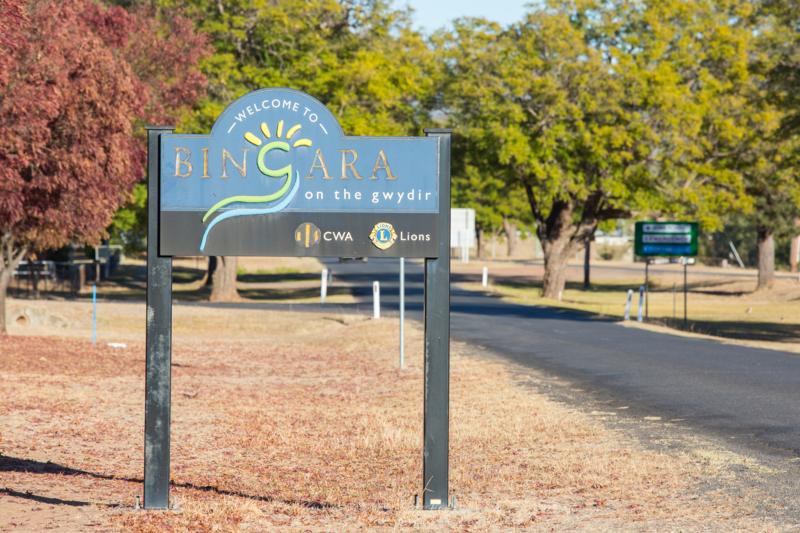
BINGARA FAST FACTS
1,428 - The population of Bingara in 2016
6% - The population growth of Gwydir Shire 2011-16
$236,000 - The median house price in Bingara.
Sources: 2016 Census, realestate.com.au
KEY DATES IN BINGARA’S HISTORY
1827 - Explorer Allan Cunningham crossed the Gwydir River where Bingara now stands.
1838 - Myall Creek Massacre of 28 Aboriginal men, women and children at Myall Creek Station.
1853 - Gold discovered and settlements developed.
1890 - Bingara became a municipality.
1922 - Bingara’s Grace Munro named the Country Women’s Association’s founding president.
Source: bingara.com.au